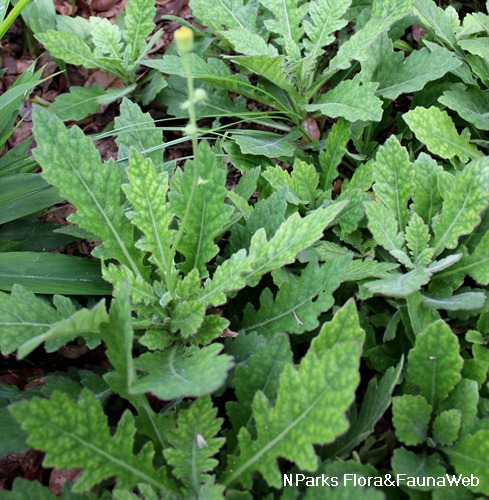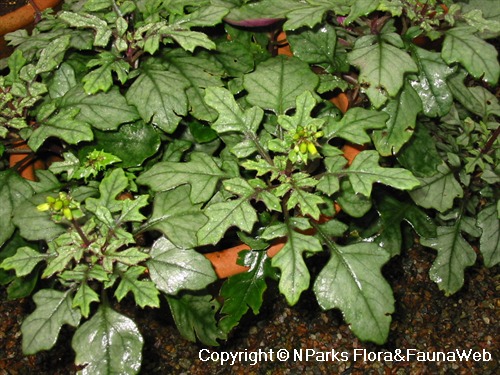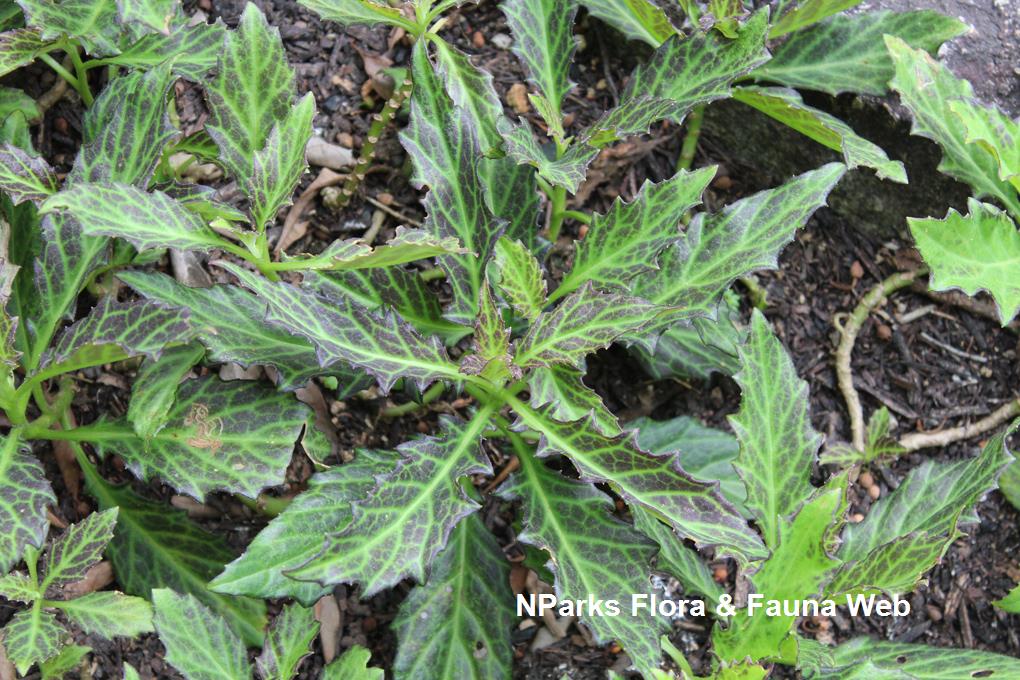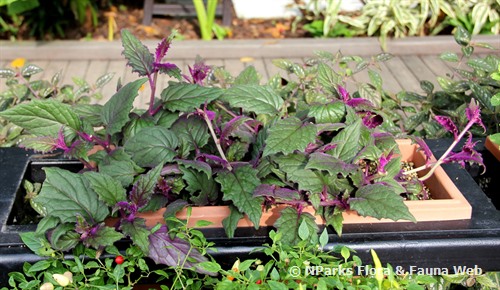
Back
Gynura bicolor DC.
| Family Name: | Asteraceae (Compositae) |
| Common Name: | Velvet Plant, Kinjiso, Okinawan Spinach, Redflower Ragleaf, Fireweed, 紅鳳菜, 紫背天葵 |
Name
Classifications and Characteristics
| Plant Division | Angiosperms (Flowering Seed Plants) (Dicotyledon) |
|---|---|
| Plant Growth Form | Herbaceous Plant |
| Lifespan (in Singapore) | Perennial |
| Mode of Nutrition | Autotrophic |
| Maximum Height | 1 m |
Biogeography
| Native Distribution | South and East Asia |
|---|
Description and Ethnobotany
| Growth Form | Annual or perennial herb up to 1 m tall. |
|---|---|
| Foliage | The light green, fleshy leaves (15 cm long) have a reddish purple underside, are covered in soft, short hairs and have a 0.3-3 cm long petiole (leaf stalk). The lower leaves are purple, while the young, upper leaves are green. |
| Stems | The hairless, ribbed stem may be red, purple or green. |
| Flowers | The thistle-like, compound flower is a cylindrical head (1.3-1.6 cm long, 0.5-0.6 cm wide) composed of yellow or orange, tubular florets. |
| Fruit | The dry, one-seeded fruit is known as an achene (3-4 mm long). The dark purple fruit is hairy. |
| Cultivation | In Singapore, Gynura bicolor needs protection from hot afternoon sun and can be grown under a shade cloth. It should be grown in well-drained, loamy soil and is sensitive to waterlogged soils. The leaves are ready to harvest after 35-40 days. When the plant reaches 20-25 cm tall, you can harvest the upper leaves (those >8-10 cm aboveground) every 1-2 weeks for 40-50 days. |
| Ethnobotanical Uses | Edible Plant Parts : Edible Leaves Food (Fruit or Vegetable): Leaves and young shoots are eaten in stews, soups and stir-fries. They are rich in iron and a good source of beta-carotene and calcium. |
Landscaping Features
| Desirable Plant Features | Ornamental Foliage |
|---|---|
| Landscape Uses | Flowerbed / Border, Container Planting |
| Thematic Landscaping | Economic Garden |
Plant Care and Propagation
| Light Preference | Semi-Shade |
|---|---|
| Water Preference | Moderate Water |
| Rootzone Tolerance | Fertile Loamy Soils, Well-Drained Soils |
| Maintenance Requirements | Moderate |
| Propagation Method | Stem Cutting |
Foliar
| Mature Foliage Colour(s) | Green, Purple |
|---|---|
| Foliar Type | Simple / Unifoliate |
| Foliar Attachment to Stem | Petiolate |
| Foliar Shape(s) | Non-Palm Foliage (Ovate, Obovate, Elliptical, Spathulate) |
| Foliar Venation | Pinnate / Net |
| Foliar Margin | Serrate / Toothed |
| Foliar Apex - Tip | Acute |
| Foliar Base | Attenuate |
Floral (Angiosperm)
| Flower & Plant Sexuality | Bisexual Flowers |
| Flower Colour(s) | Brown, Orange, Yellow / Golden |
|---|---|
| Flower Grouping | Cluster / Inflorescence |
| Flower Location | Terminal |
| Individual Flower Shape | Tubular |
| Inflorescence Type | Head / Capitulum |
Fruit, Seed and Spore
| Mature Fruit Colour(s) | Purple |
|---|---|
| Fruit Classification | Simple Fruit |
| Fruit Type | Indehiscent Dry Fruit |
| Seed Quantity Per Fruit | Few (1-5) |
Image Repository
Others
| Master ID | 29775 |
|---|---|
| Species ID | 4084 |
| Flora Disclaimer | The information in this website has been compiled from reliable sources, such as reference works on medicinal plants. It is not a substitute for medical advice or treatment and NParks does not purport to provide any medical advice. Readers should always consult his/her physician before using or consuming a plant for medicinal purposes. |






